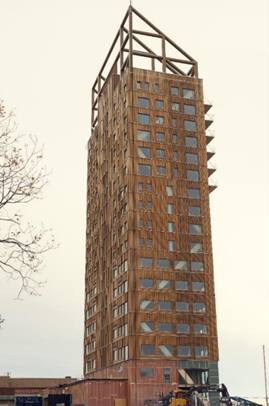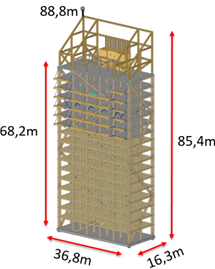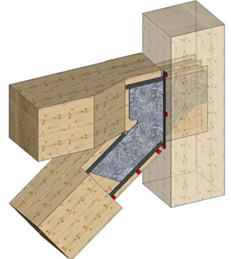Mjøstårnet: The World’s Tallest Timber Building Revolutionizing Construction
Mjøstårnet: The World’s Tallest Timber Building Revolutionizing Construction
By: jevan Nathaniel

Mjøstårnet is an 85.4-meter wooden high-rise in Brumunddal, Norway, recognized as a pioneering achievement in timber construction. Built by AB Invest, owned by Arthur and Anders Buchardt, it showcases wood as a sustainable alternative for tall buildings. Using cross-laminated timber (CLT) and glulam, the tower reduces carbon footprints while housing apartments, a hotel, a restaurant, and conference spaces. Construction began in April 2017 and finished in March 2019, with an indoor swimming arena adjacent to the main tower. The main structure relies on glulam trusses along the facade, as well as internal columns and beams. CLT is used for secondary walls supporting three elevators and two staircases. A unique aspect of the design is its resistance to horizontal forces caused by wind, with structural rigidity ensured through interlocking timber elements. The key materials used include glulam (produced by Moelven Limtre) for the main structure, CLT (manufactured by Stora Enso) for certain walls and floors, and laminated veneer lumber (LVL) for floor elements. Additionally, stainless steel was used in the structural connections, and prefabricated facade panels with integrated insulation and external cladding were installed on-site.

The structural system of Mjøstårnet features a primary framework composed of large glulam frames along the facade, which support both vertical and horizontal loads. This system is reinforced by internal columns and beams to ensure the overall stability of the building. CLT is used for the elevator shaft and stairwell walls but does not directly contribute to the lateral stability of the building.
Mjøstårnet, an 85.4-meter wooden high-rise, has a 17 × 37 m footprint and is supported by deep pile foundations anchored to bedrock for stability. From floors 2–11, Moelven’s Trä8 system—consisting of glulam, LVL, Rockwool insulation, and a thin concrete layer—enhances acoustic performance. Meanwhile, floors 12–18 use precast concrete slabs to add mass and reduce wind-induced vibrations. Designed to withstand wind forces and dynamic loads, Mjøstårnet complies with ISO 10137 and Eurocode 1 standards, ensuring structural stability and occupant comfort.
Fire resistance is a critical aspect of Mjøstårnet’s design. The entire primary structure is engineered to withstand fire for a minimum of 120 minutes for structural elements and 90 minutes for floors. This was achieved through several strategies, including the use of large-dimension glulam, which retains its structural integrity even after the outer layer burns and forms a char layer that slows fire spread. Additionally, fire-resistant coatings were applied to the interior stairwell and evacuation routes, while exposed CLT sections along exit routes were covered with fire-resistant gypsum boards to prevent further fire spread.

Mjøstårnet features an active fire suppression system with sprinklers and a Firestop facade to slow fire spread. Steel connectors are deeply embedded, and joints are filled with intumescent material for added protection. Since its opening, it has gained global attention as a pioneer in high-rise timber construction, inspiring similar projects and proving wood’s potential as a sustainable building material.
References
Abrahamsen, R. (2017). Mjøstårnet – Construction of an 81 m tall timber building. 23rd Internationales Holzbau-Forum (IHF) 2017, Moelven Limtre AS, Moelv, Norway.
Abrahamsen, R. (2018). Mjøstårnet – 18 storey timber building completed. 24th Internationales Holzbau-Forum (IHF) 2018, Moelven Limtre AS, Moelv, Norway.

